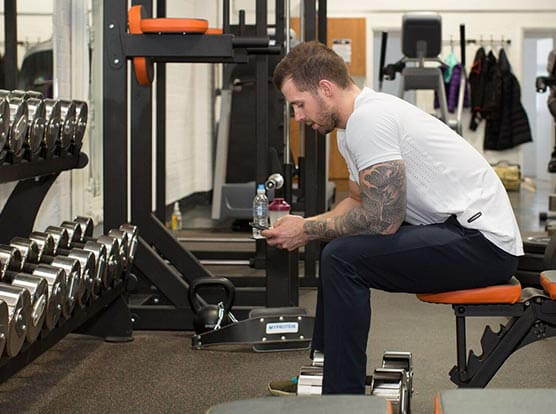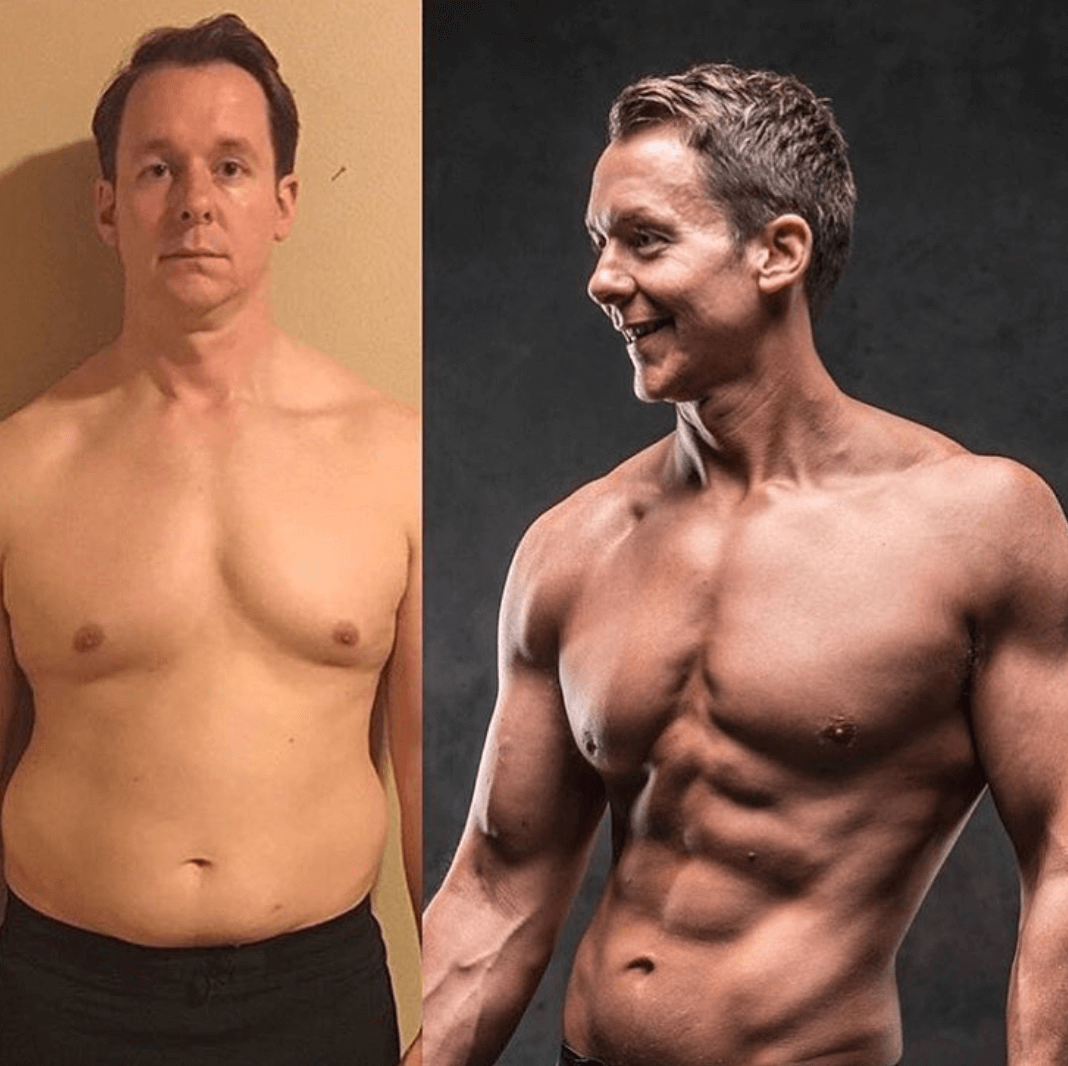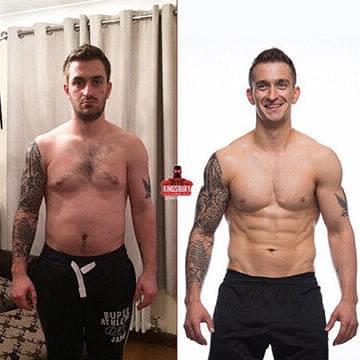One of the first things you need to consider when you start training for muscle is the exercises you are going to utilise.
Not all exercises are created equally and you need to ensure you make the right choices here to maximise your chances of progress.
When creating your plan, unless you are training for a very specific task that requires only limited muscle groups, you should ensure you are working your body evenly.
Symmetry is not just aesthetically pleasing, but training a wide variety of muscle groups over the course of your workouts helps to prevent injury.
Antagonistic Workouts
When youÂ’re working out, you should try to train antagonistic muscle groups for greater strength gains in a shorter time.
Antagonistic muscles are muscle groups which oppose each other. Â Examples of antagonistic muscle groups are your chest and back or your triceps and biceps. Â Any muscle group which works in the opposite direction to another is antagonistic.
When you exercise a muscle group, the antagonistic group is forced to relax. Â You can think of these muscles as being push and pull groups. If youÂ’re doing a bench press, youÂ’re pushing. Â If youÂ’re rowing, youÂ’re pulling. If you exercise your quads with a leg extension, youÂ’re pushing. If you exercise your hamstrings with a leg curl, youÂ’re pulling.
When you do a push, your body has to relax the pull groups. Â If it didnÂ’t, the push groups would be fighting against the pull groups. Â By taking advantage of your bodyÂ’s natural ability to relax antagonistic muscles, those muscles recover more quickly.
By training these antagonistic groups, alternating between pushing and pulling sets during your workout, research has shown that you can improve performance in a quicker time[1][2].
Compound lifts or isolation?
Some personal fitness instructors tell you that you should be doing compound lifts to exercise multiple muscle groups at once, for maximum gains. Â Others recommend the use of isolated movements which work one group at a time.
There is limited research comparing these two approaches. Â Last year a review comparing 23 studies was published. They found no significant difference in muscle growth between the two methods. Â However, they did find that isolation tended to increase fatigue and soreness.
I would recommend that if you have the equipment compound lifts can be a great time saver. Â If you find that a muscle group is slowing you down in one particular movement and youÂ’ve got the time, then consider adding some isolation exercises for that group.
If you do decide to use compound lifts, itÂ’s really important to make sure youÂ’re doing them safely and effectively. Â You donÂ’t need to follow the big lifts if you are unable to perform them safely. The larger weights used in compound lifts can increase the chance of injury if you do not have the correct technique. Â Stick with movements you can do consistently and progress safely.
If you do not have the equipment, exercising muscle groups in isolation is fine. Â You can easily achieve a full body workout in this way with a bench and a pair of dumbbells.
Go heavy or go home?
Research has shown that maximum strength gains can be achieved by dropping the number of reps and increasing the weight, while greater gains in muscle size are observed for moderate weight and reps[3].
However, consistently doing big complex movements with high weights can increase muscle fatigue and increase the chance of injury.
While I recommend low rep high weight for many of your workouts, variation is very important. Â Mix your workouts up with some high rep sets, and vary your exercises to see maximum gains.
Training for hormones?
Some instructors recommend training in such a way as to boost hormones, especially testosterone, to improve muscle building.
The positive relationship between testosterone levels and muscle building has been show many times, but opinions on whether you should organise your workout to naturally boost your hormone levels are mixed.
Rest periods between sets does not seem to affect hormone levels, despite some claims to the contrary. Â A study published in 2005 compared the testosterone levels of two groups, one which rested for 2 minutes between exercises, the other rested 5 minutes between exercises. Â They found there was no difference between the two groups[4].
It has however been shown that leg exercises are a very effective way to boost testosterone and growth hormone levels. Â Could this lead to greater muscle gains in the rest of the body?
To answer this question, an experiment was carried out by a team in Norway in 2011. Â They took a group of men and got them to perform testosterone boosting leg exercises prior to a single arm workout. Â On a separate day, they exercised the other arm without performing the leg exercises first.
Both arms got stronger, but the arm which was exercised after the leg exercises increased in strength much more than the other arm[5].
ItÂ’s difficult to prove that the greater strength gains were a result of the elevated hormone levels after the leg workout, but either way, this suggests that starting your workouts with leg exercises can lead to greater strength gains.
Conclusion
ThereÂ’s a lot to consider when youÂ’re picking your exercises. Â Your choice depends on what youÂ’re trying to achieve, your time restrictions, your experience and your equipment.
It is advantageous to exercise antagonistic muscle groups, for muscle growth and recovery. Â I’d recommend compound lifts if you have the equipment and know-how, but theyÂ’re not essential to meet your goals. Â Training for hormones can be helpful, so if you have the time to fit this into your workout, it can be beneficial.
If youÂ’re in any doubt, I would highly recommend getting a personal fitness instructor to help you build your workout routine. Â This can help greatly with form, may introduce you to exercises you may not have considered, and helps with motivation.










